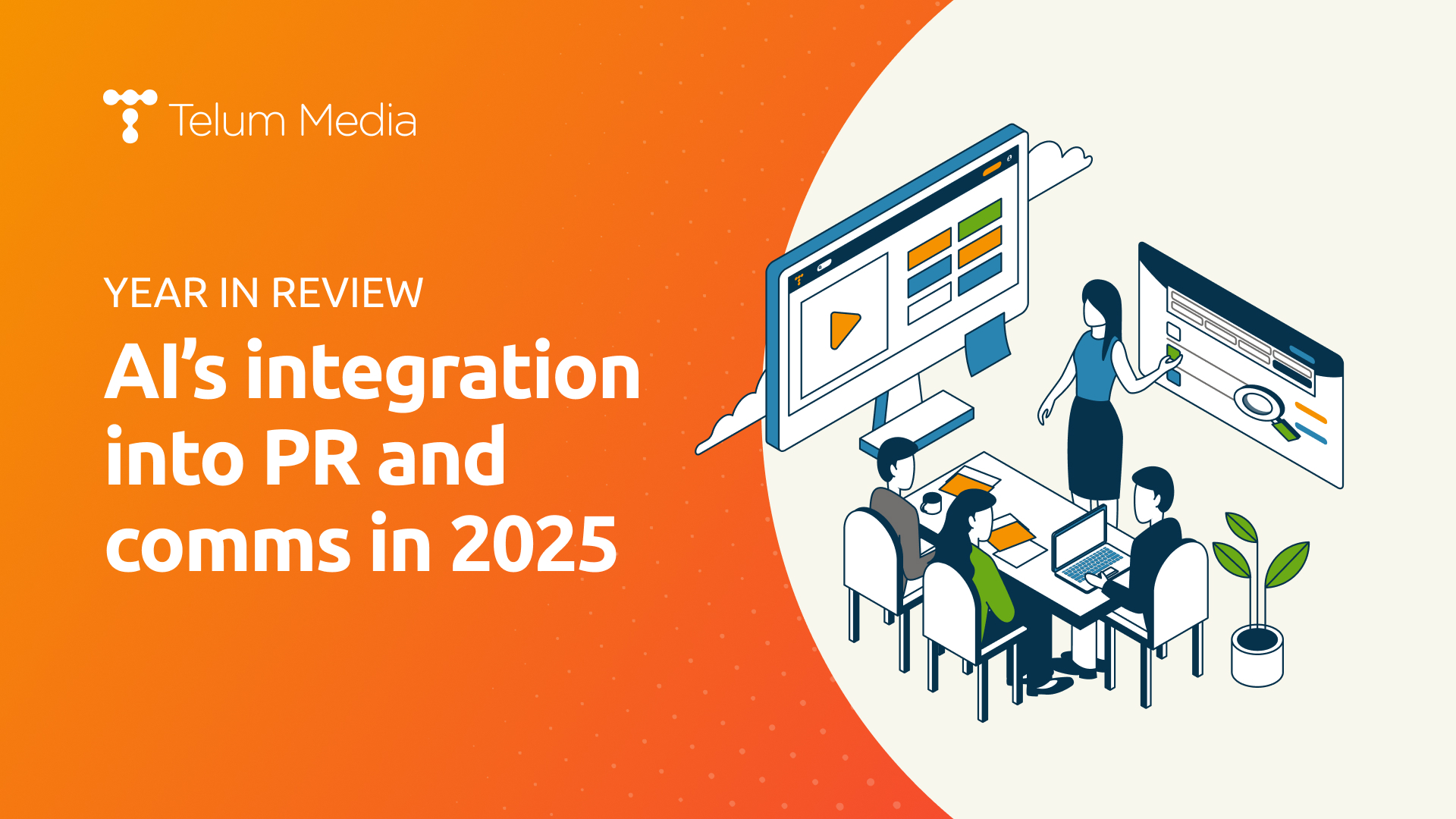In an era of increasingly erratic, escalating natural disasters, a solid and up-to-date crisis communications plan is critical in facilitating information transparency, stakeholder support, and reputation protection. Analytics and intelligence can further help strengthen comms during these high-stakes situations.
To explore the complexities around natural disaster comms responses, Telum Media spoke with Weber Shandwick's Carolyn Devanayagam, EVP, Head of Weber Advisory, APAC, and Hin-Yan Wong, EVP, Strategic Planning and Head, APAC Intelligence, to hear about best practices and the importance of data analytics in speedy, accurate, and human-centric crisis comms.
For organisations that don't yet have crisis communications plans in place for natural disasters, where should they begin?
Carolyn: In today's fast-paced information landscape, organisations must have crisis communications frameworks in place, especially in anticipation of natural disasters. Crises can emerge unexpectedly, and the speed of information transfer means organisations must be ready.
Start with a thorough risk assessment to identify natural disaster scenarios specific to your organisation's operational regions. This includes considering geographical vulnerabilities, historical disaster trends, and socio-political landscapes.
Checklist items at the Weber Advisory team include:
- Stakeholder mapping: Identifying key internal and external stakeholders, such as employees, customers, government agencies, and the media.
- Communication protocols: Establishing clear channels and protocols for effective information dissemination during crises.
- Media training: Preparing spokespersons to ensure consistent and authoritative messaging.
- Scenario planning: Conducting simulations of disaster scenarios to assess and improve the crisis plan's effectiveness.
- Once established, these plans must be regularly reviewed and updated annually to keep pace with evolving risks and organisational changes.
What are the key principles for maintaining transparent comms and public trust during disasters, especially when information is limited, evolving, or at a standstill?
Carolyn: Transparent comms are absolutely critical. Communicators must ensure that they're providing:
- Timely and accurate information: Provide regular updates, even when information is limited. Acknowledge uncertainties and commit to offering updates as new information emerges.
- Consistent messaging: Ensure all comms channels deliver a unified message, preventing confusion and misinformation.
- Empathy and reassurance: Demonstrate understanding and compassion for those affected, using language that conveys solidarity and concern.
- Proactive engagement: Engage actively with stakeholders through various channels - social media, press releases, and community outreach - to address concerns and provide support.
- For more effective strategic decision-making and stakeholder management, organisations can also implement comprehensive tracking methods, particularly within the first 48 hours of a crisis strike.
Analytics and intelligence can shape effective disaster comms - how can this support comms teams in real-time decision-making?
Hin-Yan: Real-time data from analytics and intelligence can help communicators respond quickly, accurately, and in a way that resonates with affected communities.
The first hours of a disaster are critical, and understanding public sentiment is paramount. Advanced analytics can track social media conversations, news coverage, and community reactions and gauge public sentiment in real-time. With data, comms teams can better adapt their messaging to either calm fears or provide urgent updates. For example, analytics can help identify sudden spikes in misinformation or panic early, allowing communicators to swiftly correct false narratives.
Analytics on audience behaviours, preferences, and regional sensitivities can also enable more targeted and culturally appropriate messages. In APAC, where cultural and language diversity is key, leveraging intelligence to craft region-specific messages can improve engagement and trust. Our A+I team uses audience segmentation models to understand different community needs and ensure relevant and empathetic messaging.
Analytics is also helpful for anticipating how a disaster may evolve so comms teams can prepare messaging strategies in advance, rather than reacting in a piecemeal manner. By analysing patterns from previous similar disasters, we can predict potential hotspots of concern or areas where misinformation might spread and proactively address issues before they escalate.
Lastly, A+I tools can monitor news cycles, social media, and governmental updates in real-time, which has helped our global teams remain agile through crises, ensuring that comms are aligned with the latest developments and that the right stakeholders are reached promptly.
How does predictive analytics help comms leaders prepare for post-disaster reputational risks, such as misinformation or stakeholder backlash?
Hin-Yan: By leveraging historical data, social media trends, and sentiment analysis, predictive analytics can help communicators foresee potential reputational challenges and develop proactive strategies to mitigate them.
One of the most significant post-disaster challenges is the rapid spread of misinformation, particularly on social media. Predictive analytics can model the likely trajectory of false narratives based on historical data from previous crises. By identifying emerging patterns in online discourse, comms teams can prepare to address misinformation before it spirals out of control.
These tools can also analyse sentiment trends across stakeholder groups. This data can help gauge how different segments of the public, the media, and key influencers might react to the disaster response, so leaders can prioritise communication efforts towards at-risk groups and manage emerging concerns proactively.
Predictive planning can also address reputational risks through mapping crisis scenarios that simulate how different responses or crises might impact reputation. Comms leaders can test different messaging approaches through data models to see which strategies can better mitigate reputational risks and maximise public trust. This proactive planning prepares organisations for different outcomes and reduces the need for reactive damage control.
Lastly, predictive analytics helps identify vulnerable stakeholder groups by segmenting key stakeholders - such as customers, investors, or local communities - based on their potential exposure to the crisis. By identifying those most likely to feel the impact of the disaster response or perceive a lack of transparency, comms teams can engage with them directly and offer tailored reassurance, ultimately safeguarding reputation.
Real-time data and predictive models keep crisis communications reactive and strategically anticipatory to protect client reputation in the face of unforeseen challenges.
What role does post-disaster comms play in rebuilding trust, demonstrating accountability, and supporting long-term recovery?
Carolyn and Hin-Yan: Post-disaster communications are vital in rebuilding trust and supporting long-term recovery. This includes:
- Transparency and accountability: Clearly communicating the steps taken to address the disaster's impact, including any shortcomings and corrective actions implemented.
- Continuous engagement: Maintaining open lines of communication with affected communities, providing updates on recovery efforts and timelines.
- Supportive messaging: Using messaging that acknowledges the emotional toll of the disaster and offering support and resources to those affected.
- Post-disaster communications should be an integrated approach that combines emotional intelligence with data insights to create compassionate and informative communications.
While employing data to inform recovery strategies and measure progress, communicators should also recognise the emotional impact that natural disasters have on individuals and communities and communicate with sensitivity and compassion.
What metrics matter most when evaluating disaster communications responses? How can these insights be used to strengthen future preparedness and response?
Hin-Yan: There are several key metrics that can help determine the efficacy of a disaster response.
The first is reach and engagement. Tracking how many people received and interacted with a message allows practitioners to gauge its effectiveness across channels and refine how future messages are crafted.
Equally important is sentiment analysis, which draws on social media conversations and media coverage to gauge public reaction to the response. These insights can help guide tone and content adjustments, while media coverage data can help identify effective channels.
Stakeholder feedback from customers, employees, and government representatives offers another valuable perspective, helping measure levels of trust and satisfaction.
Crisis resolution time is also critical, revealing how quickly issues were addressed and misinformation corrected. This highlights where operational processes could be improved.
Finally, assessing media coverage and PR outcomes - both the quantity and tone - provides insight into the overall impact of the messaging.
Together, these measures can directly inform future strategy, strengthening an organisation's preparedness and resilience for the next crisis.



